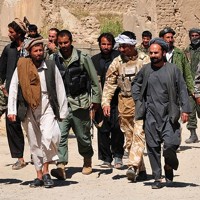Editor's note: This is the first in a two-part series examining the challenges to reaching a sustainable peace in Afghanistan. Part I examines the domestic challenges to national reconciliation. Part II will examine the regional context of the Afghan peace process.
On May 13, Maulvi Arsala Rahmani, a former Taliban official who served on Afghanistan’s High Peace Council, was assassinated in Kabul. While the official Taliban spokesman denied the group’s involvement in the killing, a little-known splinter group aligned with al-Qaida, the Mullah Dadullah Front, claimed responsibility.
Rahmani is the second major figure of the council to be killed, following former Afghan President Barhanuddin Rabbani’s assassination last year. Though U.S.-Taliban talks are currently stalled, the U.S. military withdrawal planned for 2014 means that some kind of a settlement is all but inevitable. However, in addition to being vulnerable to “spoilers” such as those who assassinated Rahmani and Rabbani, the process of negotiating peace in Afghanistan faces several domestic and international challenges. Overcoming the former will require a robust national reconciliation process that is far more extensive than the ongoing efforts to jumpstart negotiations toward a power-sharing agreement.

